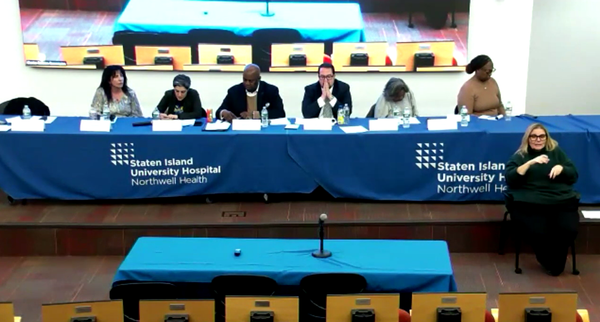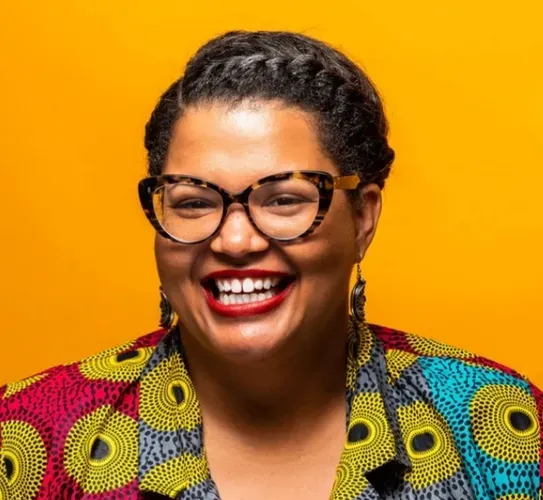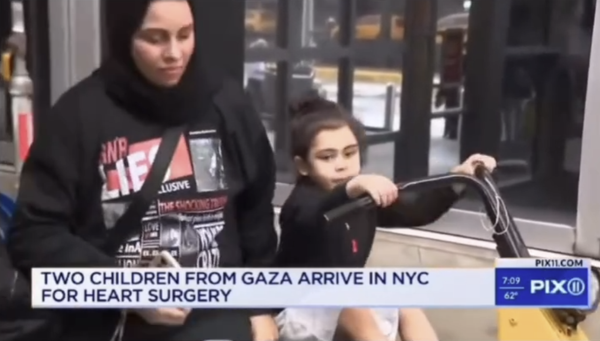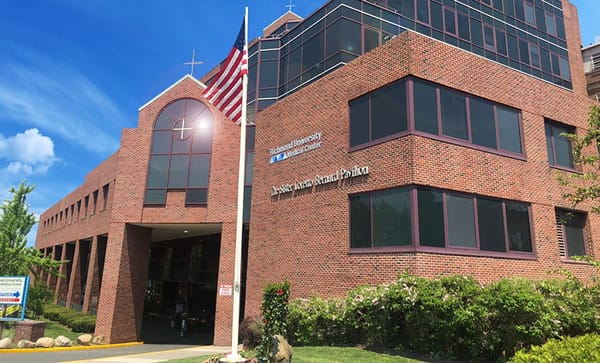How a Staten Island HBCU Fair Is Giving the Borough’s Students More Options
A volunteer committee adapts Staten Island’s eleventh annual HBCU Experience to a virtual platform to serve students despite the pandemic.
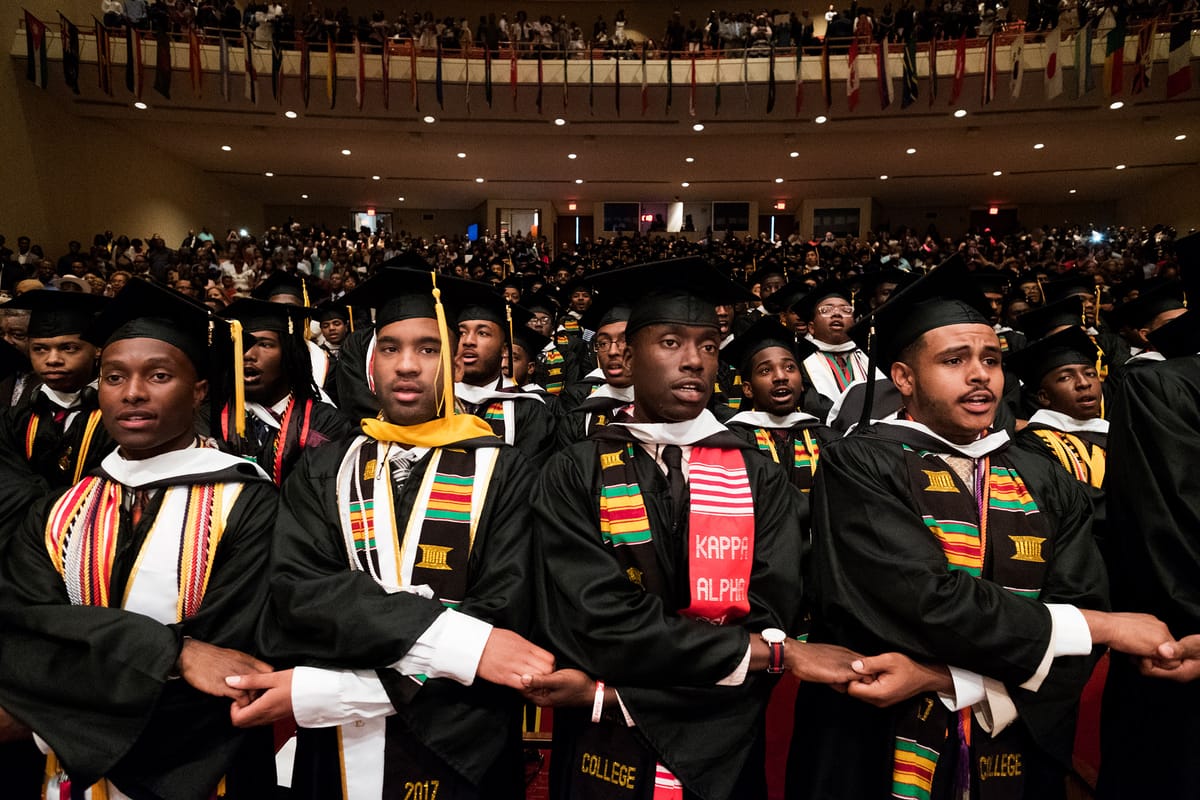
“We live by the motto, ‘Find a way or make one,’” stated Clark Atlanta University representative, Tatum Boothe, during the eleventh annual Staten Island Historically Black College and University (HBCU) Experience on January 23.
The Georgia university’s online information session included an interactive quiz about its history, a video campus tour, an overview of the school’s academic programs, a list of notable alumni, and a final Q&A.
“They gave the students in the workshop everything that they would have gave them at an [in-person] table,” commended Serena Brothers-Mohamed, an organizer of the event in past years. “I don’t feel that any student that attended today lacked, or didn’t receive, anything that they would have at the fair in person.”
Although most of the 400 students at the HBCU fair were from Staten Island, students from several states, seven countries, and four different continents also took part. Because the event was online, organizers wanted to provide access to as many people as possible. A reach this wide, geographically, would not have been possible if the event had occurred in-person – as it usually does at Curtis High School. The virtual platform also enabled more colleges than ever before to participate; over 35 HBCUs held sessions, and three students gained on-spot admissions during the fair. The impetus behind the annual event is to provide information about HBCUs that is often missing from Staten Island’s college counseling process. On the North Shore, where Black and Latinx youth are concentrated, 24 percent of youth ages 18 to 24 are out of school and out of work. When isolated from the rest of Staten Island, this is the second highest rate in the city. The HBCU Experience targets this at-risk population, as well as students on track to go to college.
Tammy Greer Brown, head organizer and one of the founders of the 11-year old event, said local high schools don’t do enough to inform Black students about the possibility of attending an HBCU. This lack of advising about HBCUs persists despite these institutions’ proven track record of success, particularly in the STEM fields. According to a 2019 report from the Postsecondary National Policy Institute (PNPI), only 9 percent of Black college students go to HBCUs, but they produce 15 percent of engineering, 25 percent of biology, and 26 percent of math degrees earned by Black students in the U.S. The report also states that “Black graduates of HBCUs have a career advantage over Black graduates of other colleges in terms of employment rates, salary, and other measures of career success.” This year Greer Brown and her committee of volunteer organizers were tasked with the daunting responsibility of delivering the in-demand HBCU fair on a totally new, virtual platform. In order to help get the word out, they tapped into the multi-level network they had cultivated over the years. Social media promotion for the event was supported by local Staten Island high school students, Curtis High School Principal, Greg Jaenicke, and the New York Urban League (a NYC-based Black advocacy organization). The strength of these partner relationships allowed the event to be funded without financial support from local politicians. Greer Brown also lauded the commitment of the event’s co-facilitators, Staten Island’s NAACP Youth Council, Moms of Black Boys (MOBB) United, and New York Center for Interpersonal Development (NYCID).
The event’s virtual platform, Hopin, provided flexible meeting spaces for students and college representatives. But, the platform didn’t quite live up to the synergy of previous years’ in-person Staten Island HBCU Experience. Greer Brown explained that “the kids had a lot more freedom to go from one [virtual] room to another, but at the same time that personalized touch was lost, being able to spend time with the students one-on-one in a private setting.”
However, some personalized interactions still managed to occur online. One such exchange took place between Tuskegee University recruiter, Barbara Cleveland, and a mother-daughter pair, Eleanor and Naji Buchannan.
When Naji said she wanted to study criminal justice, Cleveland directed her to a different university’s session. Instead of Tuskegee, which is well known for its pioneering air force and veterinary programs, she suggested Virginia Union, an HBCU that has a strong criminology department. Notably, students at Virginia Union have the unique opportunity to learn alongside incarcerated individuals about issues related to criminal justice. Before heading out, the elder Buchanan said she felt overwhelmed helping her daughter navigate this process because she had not attended college herself. Cleveland empathized with Buchanan and advised her to help her daughter seek a summer internship and scholarship opportunities from HBCU alumni associations. According to the PNPI report, “HBCUs primarily serve low-income, first-generation [college] students (nearly 3 in 5 students) compared with 14% of non-HBCUs.”
At the Morehouse panel, a group of alumni and current students discussed the advantages of attending the all-male HBCU. Jameson Floyd, a recent physics graduate, said his first choice had been an Ivy League school. When he wasn’t accepted, he found attending Morehouse to be a blessing in disguise.
“When you’re at a place in which everyone looks like you, [race] no longer is a differentiator, that’s a great thing,” Floyd said. “That’s probably the thing that helped developed me the most is having the space to exist and the space to learn and really grow, so that you’re not always put into a box as ‘the Black kid.’”
“To see a campus full of Black men all devoted towards success is just mind-blowing because the media doesn’t portray us that way,” added Kevin McGee, a current theater student at Morehouse. “We see in schools from K-12 how we are being policed, our bodies, the way we speak, our tone.”
McGee also noted, “coming from New York, we don’t really get told about HBCUs much; we’re always told about CUNY schools, SUNY schools, and staying in the means of New York.” Greer Brown, a proud Howard alum, lamented that NYC public high schools “push” CUNY schools on students and lack very basic information about HBCUs. Most local counselors are unaware of the Black Common College App, which enables students to apply to 60 HBCUs nationwide at the low cost of $20.
CUNY institutions and HBCUs have comparable four-year graduation rates, and both are considered effective vehicles for socio-economic mobility. Overall, however, CUNY students leave with considerably less debt because of their affordable tuition rates. HBCUs face a legacy of inequitable funding and, as a result, are often unable to provide competitive financial aid packages to students.
Strong networking opportunities and student-faculty relationships at HBCUs are key distinguishing factors from CUNYs, where austerity measures have left schools with limited course seats and a lack of support from overbooked academic advisors. In comparison, a common theme throughout all the HBCU fair sessions was the supportive and nurturing environment that HBCU faculty create.
When Greer Brown’s daughter was preparing for college, she had her visit a variety of historically Black colleges on the Staten Island Strong HBCU Tour.
“I made sure that she visited every school that she was interested in, so she could make an intelligent decision,” she explained.
Her daughter, ultimately, did enroll in her alma mater.
“I would have been heartbroken if she didn't go to Howard, but I would have also known that she would have had the same experience of being completely loved and totally accepted.”
If you liked this piece and want to see more like it, please subscribe.

